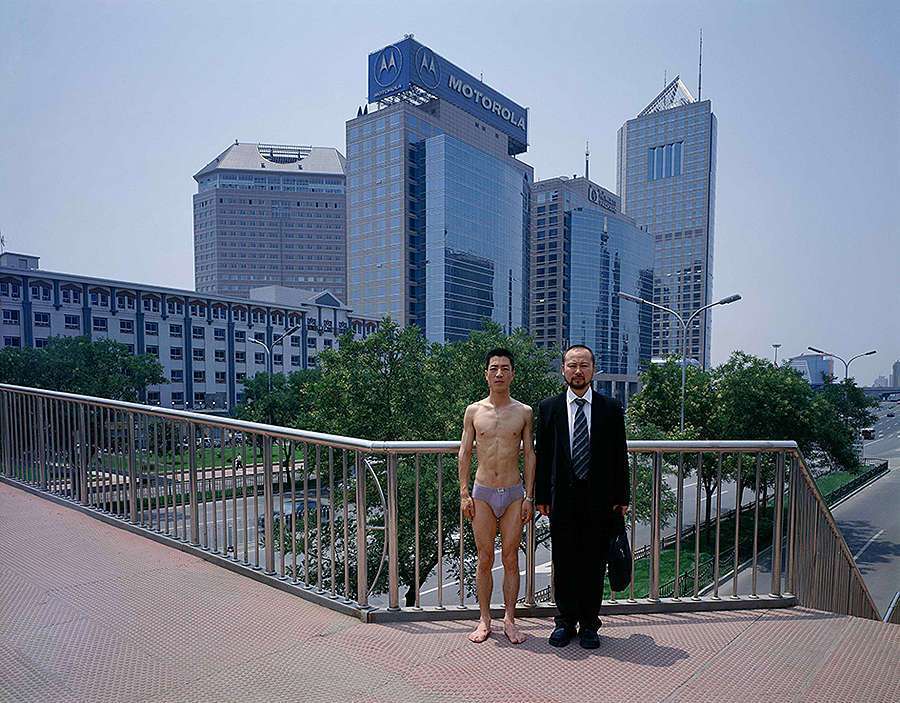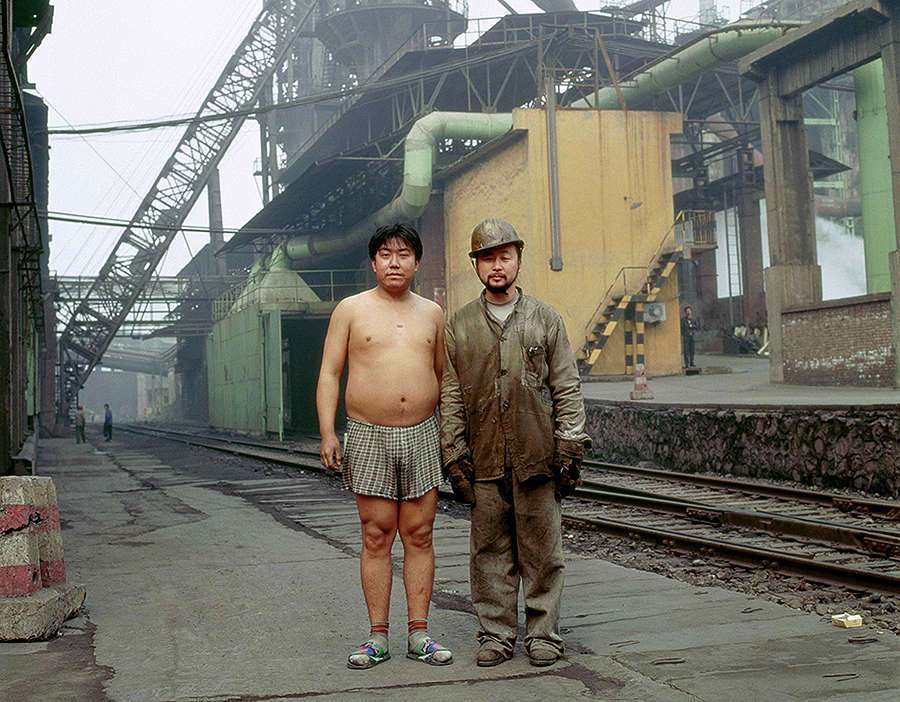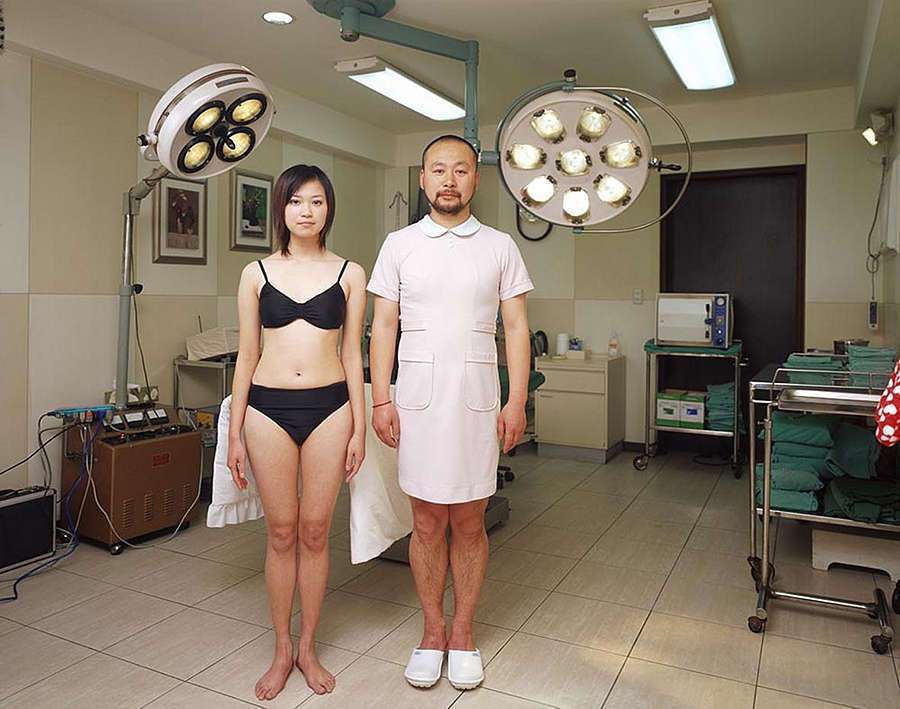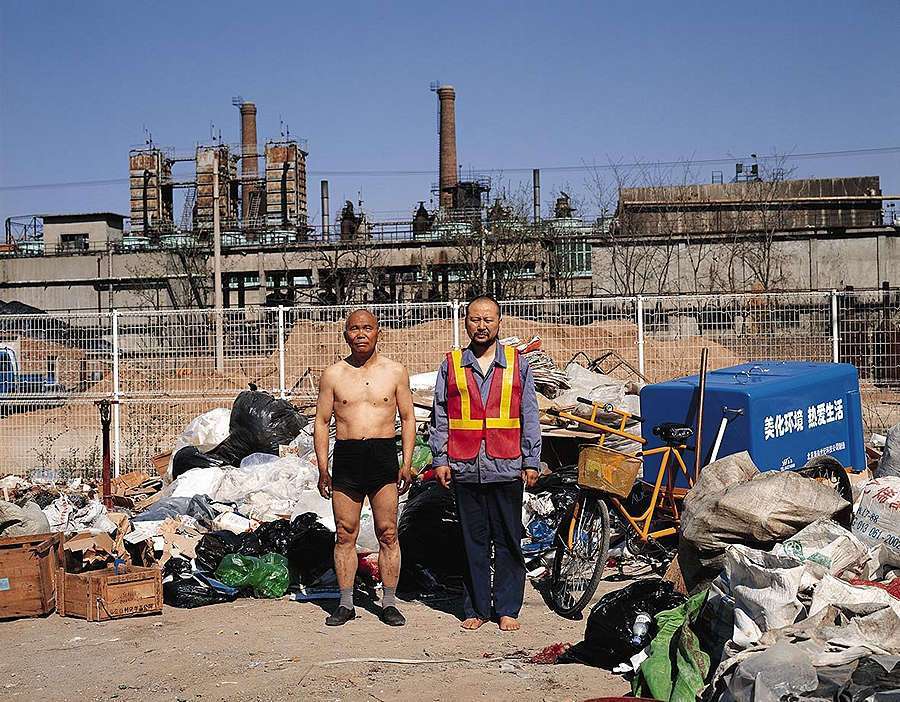
The series of performance photographs Identity Exchange started by Cang Xin in the year 2000 embody an interpretation of social reality beyond style and form. In his performance process he puts “self” and “other” together in the same space, combining the subjective with the objective to form an interactive relation. In the form of an anthropological study, he takes on the identity of a tourist and makes contact with people who live and work in different communities, carrying out a social survey, coding and decoding. In the process of dialogue and exchange, he has his picture taken together with people of different occupation, status, sex and age, including trash collectors, pretty restaurant waitresses, hotel attendants, steel workers, chefs, hospital doctors, university students, Beijing opera performers, mental patients, guards and butchers.
The joint portraits of artist and “other” that are the result of his simple “group photography” method form social links of a pluralist nature. The concepts behind Cang Xin’s art can be traced back to two sources; one is a work by Marcel Duchamp in which the artist photographs himself dressed as a woman, and the other is the group photographs so popular in China during the Cultural Revolution. Cang Xin’s performance photographs are different in that they draw our line of vision into the spaces of real society and ordinary life. The significance of his work lies in that artistic creation is no longer an aesthetics of resolved harmony, but a direct transformation of art into life and life into art again, that directly engages with various “other” spaces in both life and art. In these images it is possible to recognize and decipher the relationship between people’s mental states, their everyday living spaces and their social environment.
The clothes people wear can be used as a basic symbol and criterion on which to judge their identity, in particular when the clothes are a reflection of their profession. The clothes people wear when working dictate their status, class and rank in society; they are definitive properties that invisibly control everyone’s life and social space. The artist puts on the other person’s clothes – the “definitive property” and symbol of their profession - disguising himself in an “other” identity. But even though the other person has taken off his or her work clothes, the exposed body does not alter its innate identity. A virtual self and a real other is the supposition on which the concept of the artist in real society is based.
In his art practice Cang Xin pays close attention to the creation of space and the changeability of identity. The outcome of his interactions becomes increasingly unstable and difficult to predict. Everyone in his or her everyday life interprets cultural differences, but the artist enters social life via the critical concept of spatialisation , merging together social conditions and mental subjectivity, rewriting and reprogramming social spaces. His work draws meaning from its explanation of the function of social space, transforming spaces that serve as contexts for bodily activity or expression into spaces created by a subjective mentality. In practice these spaces include all social elements and practical activities, and affect social relations. As for his understanding of hybridity, he is not like other artists who define cultural identity within the scope of eternal values, he instead emphasises that culture and identity are in a constant state of flux and change. On this basis the artist is constantly interpreting the states of existence of self and other, engaging in a new encrypting and decoding of order, equality, social strata, chaos, weakness, powerlessness, hybridity and so on.


Here I will use one of the works from the series to explain in more detail: Cang Xin visited a scrap collector who had lived in the city for a long time; he put on his clothes, leaving the scrap collector himself half naked, and they were then photographed together. The background of the photograph consists of towering heaps of waste paper, and the bicycle cart indispensable to man’s work. These things together clearly reveal his material quality of life, and the “marginal” social environment hints at his living conditions, social status and identity. He exists in a corner of everyday life that people rarely give attention to and generally forget all about. Though the scrap collector had removed most of his “uniform”, unconsciously blurring his identity, his altered outward appearance ultimately cannot change his social position. In the relationship between subjectivity and social space, the artist strengthens the paradox between subjective and objective, and the conflict between ideals and reality. It is difficult to free oneself from the established; social order and rules conspire to return the self to its original position. The artist sees every detail of life as an element of artistic expression, endowed with poetic quality and meaning, and he boldly resists adhering to logic or objectivity in his art, creating and adjusting his concepts according to subjective imagination and free association. Discrepancies in social strata, space, the real and the performed, all are reproduced in his work, causing a slight dislocation of conceptual categories and connotations. Chaotic and abnormal fragments of life are subjectively brought back under control and reinvented. Looking at it in another way, mainstream images are by implication subject to the controlling effect of power discourse; for example, the desire to control justice, the desire to control equality and the desire to control destiny.